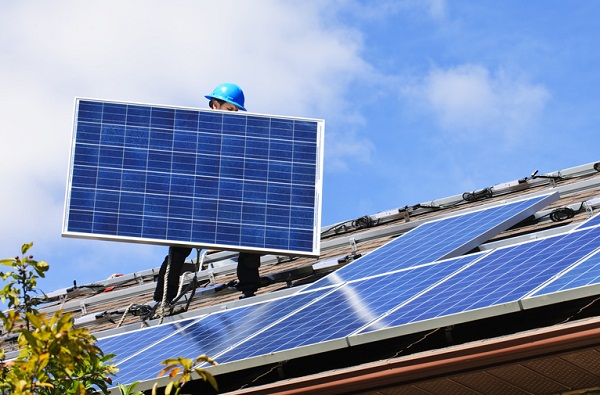There’s a big pile of cash awaiting the teams that can install thousands of new rooftop photovoltaic systems at really low prices – a $10 million pile.
The U.S. Department of Energy’s Race to the Rooftops is off and running, three months after the DOE announced its plans for the competition, which is intended to spur businesses and communities to find new ways to drive down the cost of solar power.

The competition in its newly unveiled and finalized form – you can download a PDF of the rules here — is a bit different than originally described by the DOE.
Back in June, the outlined task was for competing teams to install 5,000 rooftop solar systems between 1 and 15 kilowatts in size at an average price of $2 per watt.
Scrub that from your memory.
The new goal is to install 5,000 systems between 2 and 15 kW with non-hardware costs that average $1/W.
Trimming so-called “soft costs” – basically, everything except the equipment – has become an increasingly larger focus of the SunShot program, under which the competition is being run. The DOE called reducing these costs “the greatest challenge to achieving cost-competitive solar by 2020.”
Plunging solar module prices in the last few years have helped push down the installed cost of solar, from nearly $7 per watt at the beginning of 2010 to $5.46 for residential systems in the second quarter of this year, according to an industry report released this week. But almost all of that decline is attributable to hardware becoming cheaper, and a National Renewable Energy Laboratory presentation [PDF] earlier this year said non-hardware costs made up 52 percent of total installed costs.
We’re talking things like permitting, inspection and interconnection labor; installation labor and profit; customer acquisition and system design; hardware profit; sales tax; financing and permit fees; and additional overheard.
Prospective Race to the Rooftops competitors can now register and start tracking their installations, but there’s some paperwork involved, as you might expect: “In order to officially qualify for participation in Phase I, teams must receive concept paper assessment letters from DOE during the pre-submission period,” the DOE said. “The sooner a team registers, the sooner they can start making progress toward the installation goal.”
The first three teams to submit 5,000 qualifying installations before the end of Phase I on Dec. 31, 2014, will get the big prices – $7 million for first, $2 million for second and $1 million for third. But they’ll only get their full rewards if they also complete phase II, a yearlong process during which the teams must install 1,000 more systems and do so in a way that demonstrates they’ve got a sustainable business model.